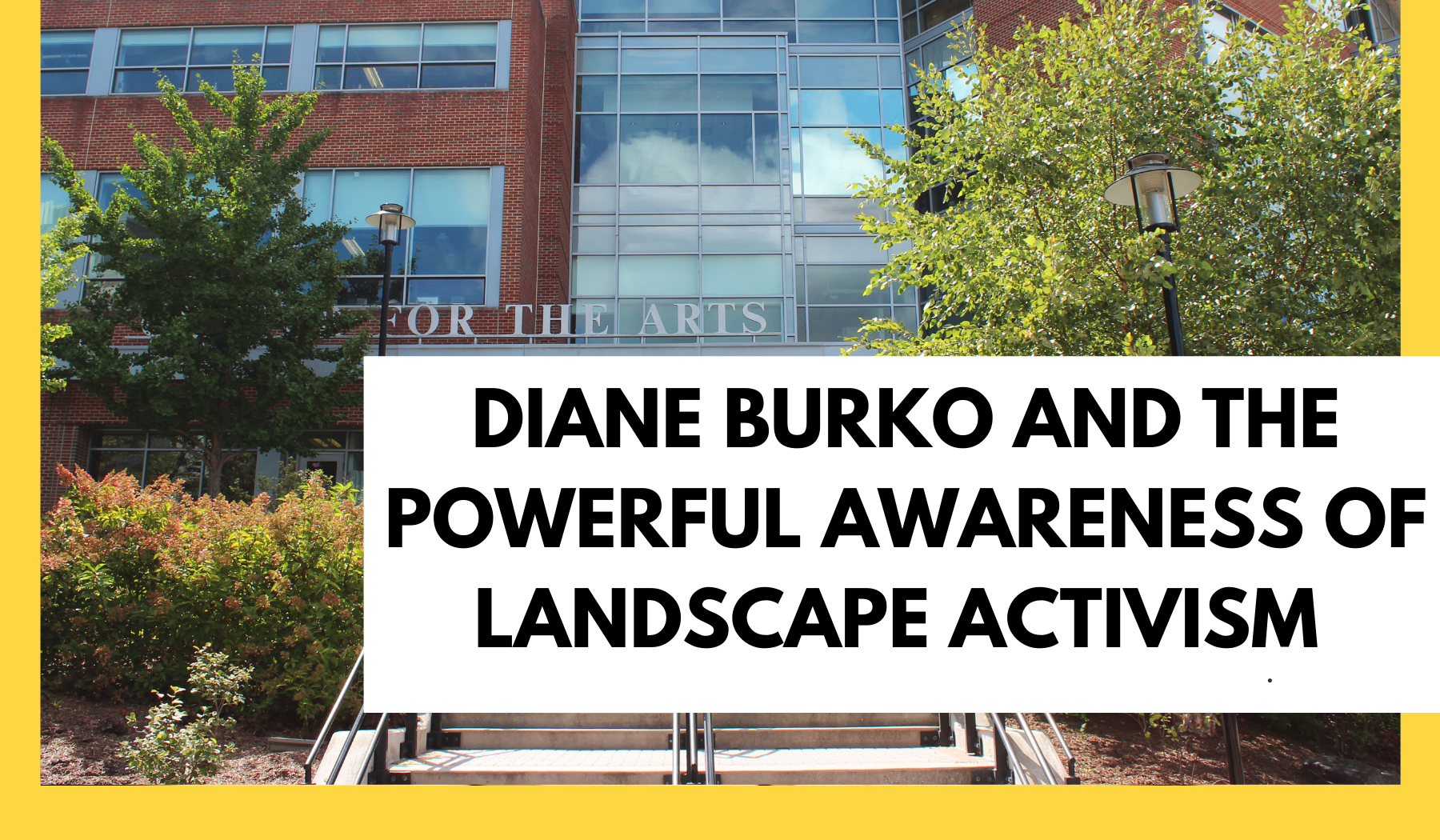
Diane Burko and the powerful awareness of landscape activism
By: Alisha Hancock, Contributing Writer
Artist and activist Diane Burko presented her lecture “Journey to the Subversive Edge: From a Landscape Painter to an Environmental Artist/Activist” on March 25, where she discussed her artwork as well as her transition to becoming a landscape activist.
Burko was invited to be a guest lecturer by Dr. J. Susan Isaacs, Curator of the Department of Art + Design, Art Histories and Art Education Galleries at Towson University (TU). The lecture was delivered via Zoom and is a companion lecture to the “Across the West and Toward the North: Norwegian and American Landscape Photography” exhibition in the Center for the Arts Gallery. Isaacs, who introduced Burko in the lecture, has known Burko’s work for some time.
“She is an artist with a long and impressive career,” Isaacs said. “She is also an artist who not only makes art in the studio but also works with programming around climate change.”
In her lecture, Burko described her long career and development from an artist to an explorer to an activist as well.
“I’m an artist and I started out being a landscape painter in the very traditional sense, en plein air painting, and had a number of residencies that allowed me to do that,” said Burko. “But I’m also an explorer, and that happened a few decades later, and I’m also an activist, and all those pieces come together now in the life that I have.”
Before her transition into environmental activism, Burko was a landscape artist in a more traditional sense. Some of Burko’s earlier work included paintings of the Grand Canyon and a four year series on volcanoes which included a trip to Iceland. While she intended to focus solely on Iceland’s volcanoes, there was another landscape that caught her eye.
“What Iceland had was a lot of waterfalls, and so I just got taken, just blown away by the waterfalls and so did a whole painting project on waterfalls,” said Burko. “But being it was Iceland which is the most volcanic country in the world, it all came together.”
According to Burko, there was a moment during her exhibition in 2006 in Iceland that was her turning point from landscape artist to landscape activist. The curator of that show had told Burko they found her painting of ice and snow from the 1970s, and put it on display.
“Instead of thinking about landscape, all of the sudden, I started thinking about the environment,” Burko said. “So, what I thought about was the snow. Was the snow still there? And you might ask, why then? I mean it was just a concurrence of things coming together because 2006 is when Al Gore had his great movie and it was also the same year as the publication of Elizabeth Kolbert’s book, ‘Field Notes from a Catastrophe.’”
After this turning point for Burko, she decided to start documenting the melting of glaciers over time and the endangerment to coral reefs. Burko included the statistic, “85 percent of reefs in the Coral Triangle are threatened,” in her painting of the Coral Triangle.
In an interview with Artblog Over the past year, Burko has focused on COVID-19, heat waves in Europe and Australian forest fires. She is currently creating a series on the burning of the Amazon Rainforest.
In the interview, with Isaacs, Burko explained the importance of public engagement in her work. She uses her landscape paintings to spread awareness.
“Part of my practice is at the intersection of art and the environment, but public engagement is integral to it, to the point where I will not do an exhibition unless the museum or university gallery agrees to commit to programming about the environment and climate change,” Burko said.
TU senior Elizabeth Haubert says the lecture helped make her more mindful of environmental issues present today.
“It’s making me more aware of the carbon footprint that we all make especially when she made the statement about the fact that even during [the pandemic], even though the water seems clear, there’s still that same amount of CO2,” said Haubert. “We still have to be mindful of that. So, she just underscored what we have to still be cognizant of as far as you know, our environment and everything.”
In her lecture, Burko also discussed the importance of spreading awareness of climate change through art.
“I think it’s important to point out that it’s not just photographers and painters, but it’s all kinds of artists today especially who are in their own way, bringing attention to the issues of climate change,” Burko said.
Graduate student Kaitlyn McQuaid mentioned how she has recently been exposed to two environmental artists and sees the importance and power of using art to raise awareness.
“Diane Burko and Stacey Levy, both environmental artists, are drawing attention to issues in ways that are incredibly powerful and beautiful,” McQuaid said. “It’s a genre of art I wasn’t as familiar with before this semester and I wish it was more widely known because it’s art that we can all use more of these days.”
Burko’s paintings and photographs can be found on her website.

